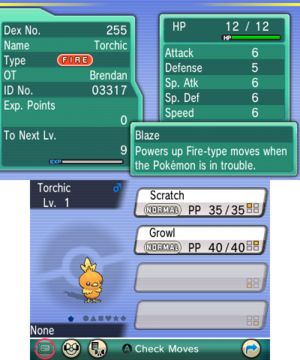Trainer ID number
A Pokémon Trainer's ID number is a five-digit number that is assigned to a Trainer when they begin their Pokémon journey. It is used, in conjunction with the Trainer's name and gender, to identify whether or not the Pokémon is an outsider Pokémon by the games. The highest possible ID number in any game is 65535.

Special ID numbers
Sometimes, there are special ID numbers assigned to Pokémon if they come from a non-standard Pokémon game or are received as a prize. Also, for Pokémon not yet hatched from their eggs, the ID ????? is used. It will turn into the ID number of the Trainer who hatches the Pokémon. It is also used for unpurified Shadow Pokémon. Once purified, the ID number will change to that of the Trainer who snagged it.
For a list of special ID numbers, see List of notable ID numbers.
Secret ID
From Generation III onward, there is a second, secret ID number, different from the visible one. This number exists purely to make sure that even if two Trainers share the exact same name and gender and the exact same Trainer ID number, the game will still recognize their Pokémon as coming from different Trainers. Usually, this number cannot be viewed; however, certain cheats can be used to view it. It also comes into play along with the normal ID number and the personality value in determining if a Pokémon is Shiny. If two different Trainers have the same Trainer name, identical ID numbers and identical hidden ID numbers (a 1 in 4,294,967,296 chance if the names do not differ), the game will recognize the two Trainers as the same, so the Pokémon are not considered to be outsider Pokémon.
ID number lottery
From Generation II through Generation IV, the player may take part in the ID number lottery every day (every week in Generation II). This involves the generation of a random 5 digit number, which is compared with the player's own ID number. Depending on the game and the nature of the match-up of digits, the player can receive a prize. This feature was dropped in Generation V games.
| This game-related article is a stub. You can help Bulbapedia by expanding it. |